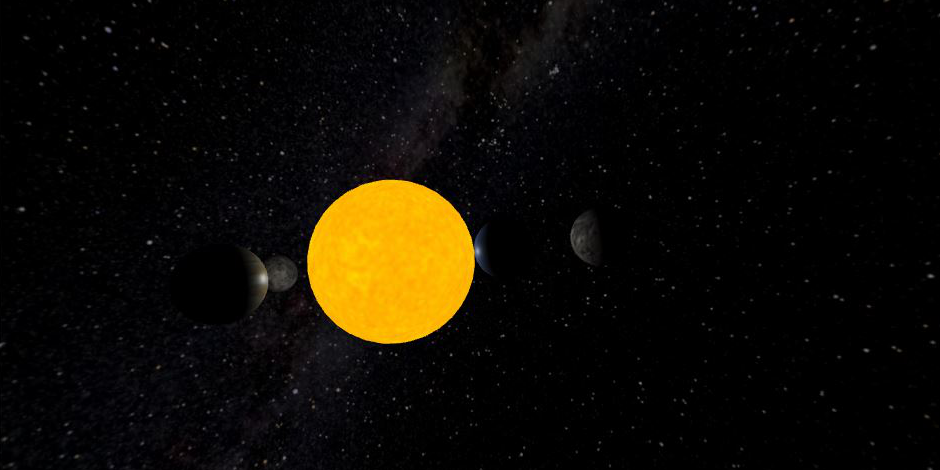HD 45364

HD 45364 is an extrasolar system located 107 light-years away in the constellation Canis Major (the Greater Dog).
The central star is an yellow dwarf (spectral type G8V), a little smaller the Sun (0.88 solar masses, 0.82 solar radii) and of similar temperature (5270 °C, compared to 5500 °C for the Sun). With a visual magnitude of 8, it can be seen with binoculars.
Ten years ago, in 2009, Alexandre Correia and his colleagues, including several astronomers from the universities of Geneva and Bern now members of PlanetS, published the discovery of two planets in this system [1]. These planets, discovered thanks to data from the Geneva-built HARPS spectrograph, were the first exoplanets discovered to be in a 3:2 resonance, i.e. such that one planet (the inner one, here HD 45364 b) makes three orbits around the star while the other one (the outer one, here HD 45364 c) makes two. This configuration is the same as that of Neptune and Pluto (Pluto orbits twice the Sun when Neptune orbits it three times).
The inner planet has a minimum mass of 59 Earth masses (a bit less than 2/3 of Saturn’s mass) and an orbital period of 227 days (similar to that of Venus). The outer planet has a minimum mass of 209 Earth masses (2/3 of Jupiter’s mass, i.e. a bit more than twice the mass of Saturn) and an orbital period of 343 days (slightly shorter than that of the Earth).
[1] Correia et al., A&A 496:521, 2009 [https://www.aanda.org/articles/aa/abs/2009/11/aa10774-08/aa10774-08.html].| Mass(MJ) | Radius (RJ) | Period (days) | Discovery | |
| HD 45364b | 0.187 | 227 | 2009 | |
| HD 45364c | 0.658 | 343 | 2009 |

